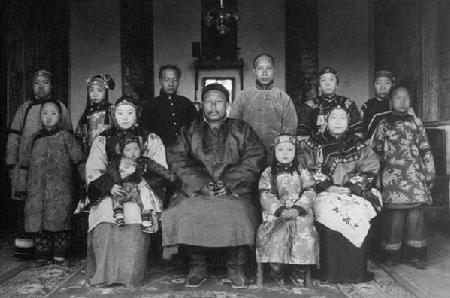


On his journey from Kashgar to Peking Mannerheim gathered a great deal of scientific information, so that the scientific purpose of the expedition did not only remain a cover.
The journey with the French expedition of Pelliot was cut short, and Mannerheim had to continue on his own. He was able to get assistance and accommodation with the western missionaries. To some extent, these contacts helped to dispel the rumours (knowledge) of his being a Russian officer. In Yarkant, he stayed with Gustav Raquette, a missionary doctor. In Kuldza, he practised excavation with Djakov, the secretary at the Russian Consulate.
 In summer 1907 the journey moved to the Silk Road, famous for
its mountains. The journey proceeded through areas populated by various primitive tribes,
muslims, taoists and buddhists. In the summer of 1908 he met Dalai Lama, the spiritual
leader of the Tibetans. Mannerheim took approximately 1,300 photographs of the life of the
Chinese nations during his journey, among which there are anthropological photographs of
eight peoples. He also carried out anthropometric measurements.
In summer 1907 the journey moved to the Silk Road, famous for
its mountains. The journey proceeded through areas populated by various primitive tribes,
muslims, taoists and buddhists. In the summer of 1908 he met Dalai Lama, the spiritual
leader of the Tibetans. Mannerheim took approximately 1,300 photographs of the life of the
Chinese nations during his journey, among which there are anthropological photographs of
eight peoples. He also carried out anthropometric measurements.
 Mannerheim brought the scientific results of his journey to
Finland. His notes on yellow Uigurs were published in 1911. Most of the objects he
collected – 1,200 in all – from the Sarts, Kirghiz, yellow Uigurs, Tibetans and
Chinese form a collection of their own in the National Museum. The collection of the
remnants of his old scripts and the notes he made on his journey, are in the possession of
the Finno-Ugrian Society.
Mannerheim brought the scientific results of his journey to
Finland. His notes on yellow Uigurs were published in 1911. Most of the objects he
collected – 1,200 in all – from the Sarts, Kirghiz, yellow Uigurs, Tibetans and
Chinese form a collection of their own in the National Museum. The collection of the
remnants of his old scripts and the notes he made on his journey, are in the possession of
the Finno-Ugrian Society.
 In the 1930s Mannerheim decided to publish his
trip diary at the request of the Finno-Ugrian Society. The editing work was done by Kaarlo
Hildén, and the volume came out in Finnish (translated by Emerik Olson titled "Matka
Aasian halki"), in Swedish (titled "Resa genom Asien") and in English in
1940.
In the 1930s Mannerheim decided to publish his
trip diary at the request of the Finno-Ugrian Society. The editing work was done by Kaarlo
Hildén, and the volume came out in Finnish (translated by Emerik Olson titled "Matka
Aasian halki"), in Swedish (titled "Resa genom Asien") and in English in
1940.
Military Ranks | Military Career in Russia | Russian Army | Imperial Guard | Administration of Imperial Stables | Nicholas II | In Russo-Japanese War | Chinese Expedition 1906-1908 | Scientific Expedition in Asia | Time in Poland | World War I | Mannerheim in World War I | Cross of St George | Sword of St George | Russian Revolution | Resignation from Russian Service
COURSE OF LIFE | FAMILY | TIME OF GROWTH | MILITARY CAREER | WAR OF INDEPENDENCE | REGENT 1918-1919 | CIVILIAN | DEFENCE COUNCIL | COMMANDER-IN-CHIEF 1939-1946 | PRESIDENT OF THE REPUBLIC 1944-1946 | RETIREMENT | SPECIAL TOPICS | SEARCH










